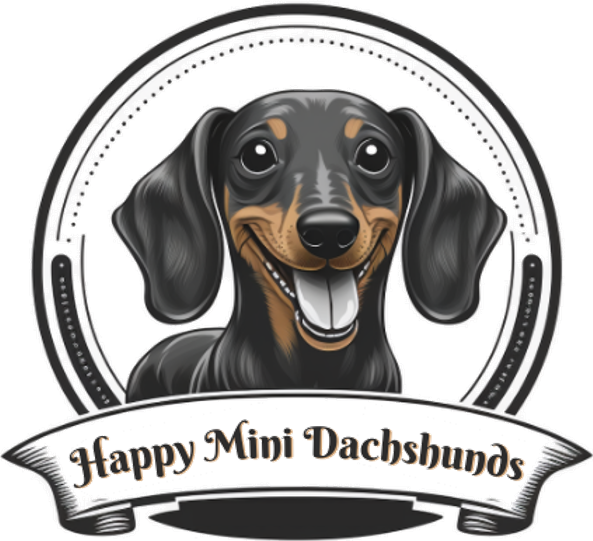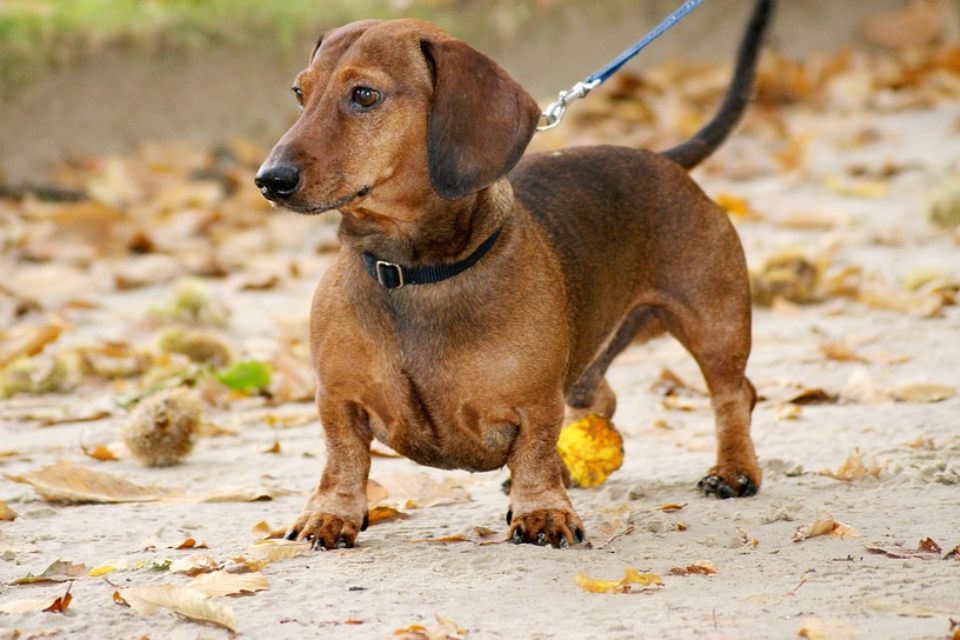Miniature Dachshunds are popular pets known for their playful personalities and unique physical features. They have short legs, long bodies, and an independent streak that makes them a delight to own. However, like all dogs, they need exercise to stay healthy and happy. In this article, we will explore how long to walk a Miniature Dachshund and other factors to consider when it comes to their exercise routine.
Exercise is essential for dogs, but it’s not a one-size-fits-all approach. Different breeds have different requirements, and age, size, and activity level also play a significant role in how much exercise a dog needs. For Miniature Dachshunds, finding the right balance of activity and rest is especially important, given their susceptibility to spine and joint issues.
We’ll discuss the recommended amount of exercise, the types of exercise that are suitable for Miniature Dachshunds, and how to ensure they’re getting enough while also avoiding over-exertion. We’ll also cover health considerations and signs to watch out for that indicate your dog may be overdoing it. By the end of this article, you’ll have a better understanding of how to keep your Miniature Dachshund happy and healthy through exercise.
Key Takeaways:
- Miniature Dachshunds require regular exercise to maintain their physical and mental health.
- Walking is an excellent exercise option for Miniature Dachshunds, but owners should be aware of their limitations and potential health concerns.
- Signs of over-exercising in Miniature Dachshunds include limping, stiffness, and fatigue, and owners should be cautious not to push their dogs beyond their limits.
Factors to consider
Before figuring out how long to walk your Miniature Dachshund, there are a few factors to consider. These include age, health, size, and activity level.
Age
Just like humans, dogs’ exercise needs change as they age. Puppies, for example, have boundless energy and need plenty of opportunities to run and play. As they get older, their energy levels may decrease, and they may be more prone to joint and mobility issues. Senior Miniature Dachshunds may still enjoy exercise, but they may need shorter and more gentle walks. It’s essential to talk to your veterinarian to determine the appropriate amount of exercise for your Miniature Dachshund based on their age.
Health
Your Miniature Dachshund’s overall health plays a critical role in their exercise routine. Dogs with chronic health conditions, such as arthritis, may need more low-impact exercises like swimming, while dogs with heart or respiratory issues may need to take it easy during hot or humid weather. Additionally, dogs who are recovering from an injury or surgery may need to limit their activity level until they are fully healed. Always consult with your veterinarian before starting or modifying your Miniature Dachshund’s exercise routine.
Size
Miniature Dachshunds are small dogs, and their size can impact how much exercise they need. Smaller dogs, in general, have faster metabolisms, meaning they burn calories faster than larger dogs. However, they also have smaller bodies and may tire more quickly. It’s important to pay attention to your Miniature Dachshund’s energy levels during walks and adjust accordingly.
Activity level
Finally, your Miniature Dachshund’s activity level is an important factor to consider. Some Miniature Dachshunds are more active and high-energy than others, and may need more exercise to burn off excess energy. Others may be more laid-back and prefer shorter walks. It’s essential to tailor your Miniature Dachshund’s exercise routine to their individual needs and personality.
How much exercise do miniature dachshunds need?
Miniature Dachshunds are a small breed of dog, and their exercise needs are generally lower than larger breeds. However, they still require regular exercise to stay healthy and happy. So, how much exercise do Miniature Dachshunds need?
General guidelines
According to the American Kennel Club, Miniature Dachshunds require at least 30 minutes of exercise per day. This can be broken up into two 15-minute walks or three 10-minute walks. It’s important to note that these are general guidelines, and the amount of exercise your Miniature Dachshund needs may vary based on the factors discussed earlier.
Signs your miniature dachshund needs more exercise
While 30 minutes of exercise per day may be enough for some Miniature Dachshunds, others may require more. Here are some signs that your Miniature Dachshund may need more exercise:
- Excessive barking or chewing: If your Miniature Dachshund is exhibiting destructive behaviors, it could be a sign that they are not getting enough exercise and are bored.
- Restlessness: If your Miniature Dachshund is pacing or unable to settle down, it could be a sign that they need more exercise.
- Excessive weight gain: If your Miniature Dachshund is gaining weight despite a healthy diet, it could be a sign that they need more exercise.
Over-exercising your miniature dachshund
While regular exercise is essential for your Miniature Dachshund’s health, it’s also important not to over-exercise them. Over-exercising can lead to fatigue, joint pain, and other health issues. It’s important to pay attention to your Miniature Dachshund’s energy levels during walks and adjust accordingly.
Tailoring your miniature dachshund’s exercise routine
As we discussed earlier, there is no one-size-fits-all answer to how much exercise Miniature Dachshunds need. It’s essential to tailor your Miniature Dachshund’s exercise routine to their individual needs and personality. If your Miniature Dachshund is older or has health issues, they may need shorter and more gentle walks. If they are high-energy, they may need longer or more frequent walks.
Types of exercise
There are many types of exercise that can benefit miniature dachshunds. Here are some options to consider:
- Walking: As we mentioned earlier, walking is a great form of exercise for miniature dachshunds. It’s low-impact and helps them burn off energy. However, it’s important to keep in mind that they have short legs, so walking for long distances or on uneven terrain may be challenging for them.
- Playing fetch: Playing fetch is a great way to get your miniature dachshund moving and to engage them mentally. However, be careful not to overdo it, as their backs are prone to injury.
- Swimming: If your miniature dachshund enjoys the water, swimming is an excellent low-impact exercise option. It’s easy on their joints and can help them build endurance.
- Agility training: This type of exercise can help your miniature dachshund build strength, endurance, and agility. However, it’s important to start slow and use caution, as their backs can be easily injured.
- Treadmill: If the weather is bad or you don’t have access to safe outdoor areas, a treadmill can be a good alternative for providing exercise. However, make sure to supervise them closely and start at a slow pace to avoid any injuries.
Remember to choose activities that your miniature dachshund enjoys and that match their energy level. You should also consider any health conditions they may have, such as arthritis or back problems, and adjust the intensity of the exercise accordingly.
Walking your miniature dachshund
Walking is one of the most common and effective forms of exercise for miniature dachshunds. Here are some tips on how to make the most out of your walks with your furry friend:
- Start slowly: If your dog is not used to walking, it’s important to start slowly and gradually increase the duration and intensity of the walks. This will help prevent injuries and ensure your dog doesn’t become too exhausted.
- Use a leash: Always use a leash when walking your miniature dachshund. This will keep your dog safe and prevent them from running away or getting into trouble.
- Choose the right collar or harness: When selecting a collar or harness for your dog, make sure it fits properly and doesn’t cause any discomfort. A harness can be a good option for dachshunds as it distributes the pressure across their chest rather than their neck.
- Stay hydrated: Bring water and a bowl with you on walks to keep your dog hydrated, especially on hot days. You can also plan your walk to include water breaks at parks or other areas with water sources.
- Be aware of the environment: Keep an eye out for any potential hazards on your walk, such as sharp rocks or broken glass. Also, be mindful of the weather conditions and adjust your walking schedule accordingly.
- Incorporate training: Walking can also be an opportunity to incorporate training exercises, such as practicing basic commands like sit and stay. This can help keep your dog engaged and mentally stimulated during the walk.
Overall, walking is a great way to keep your miniature dachshund healthy and happy. By following these tips, you can ensure that your walks are safe, enjoyable, and beneficial for both you and your furry friend.
Signs of over-exercising
It’s important to be aware of the signs of over-exercising in your miniature dachshund. Over-exercising can lead to muscle strains, joint problems, and other health issues. Here are some signs to watch out for:
- Limping or difficulty walking
- Excessive panting or drooling
- Disinterest in walking or exercise
- Stiffness or reluctance to move
- Swollen joints or muscles
If you notice any of these signs, it’s important to take a break from exercising and consult with your veterinarian. They can help determine if your dog has been over-exercising and provide guidance on how to adjust their exercise routine.
It’s important to remember that every dog is different, and what works for one dog may not work for another. Pay attention to your miniature dachshund’s behavior and adjust their exercise routine accordingly. By providing your dog with the right amount and type of exercise, you can help them stay healthy and happy for years to come.
Health considerations
While exercise is important for a miniature dachshund’s physical and mental wellbeing, it’s important to keep in mind that these dogs may have some health conditions that could affect their ability to exercise. As with any dog, it’s always best to consult with your veterinarian before starting any exercise routine.
One of the most common health issues for dachshunds is their propensity for back problems. These dogs have long spines and short legs, which can put them at risk for intervertebral disc disease (IVDD). IVDD occurs when the cushioning discs between the vertebrae in the spine become damaged or ruptured, leading to pain, nerve damage, and even paralysis. Certain activities, such as jumping or rough play, can put extra strain on a dachshund’s back and increase the risk of IVDD. As such, it’s important to avoid high-impact activities and to monitor your dog closely during exercise.
Another health consideration to keep in mind is obesity. Miniature dachshunds are prone to weight gain, which can put extra stress on their joints and exacerbate any back problems they may have. Regular exercise, combined with a balanced diet, is the best way to keep your dachshund at a healthy weight.
Finally, it’s important to keep your dachshund’s age in mind when planning an exercise routine. As dogs age, they may become less active and may have trouble with certain activities. It’s important to adjust your dog’s exercise routine as they get older to ensure they are getting the right amount of activity without putting too much strain on their body.

